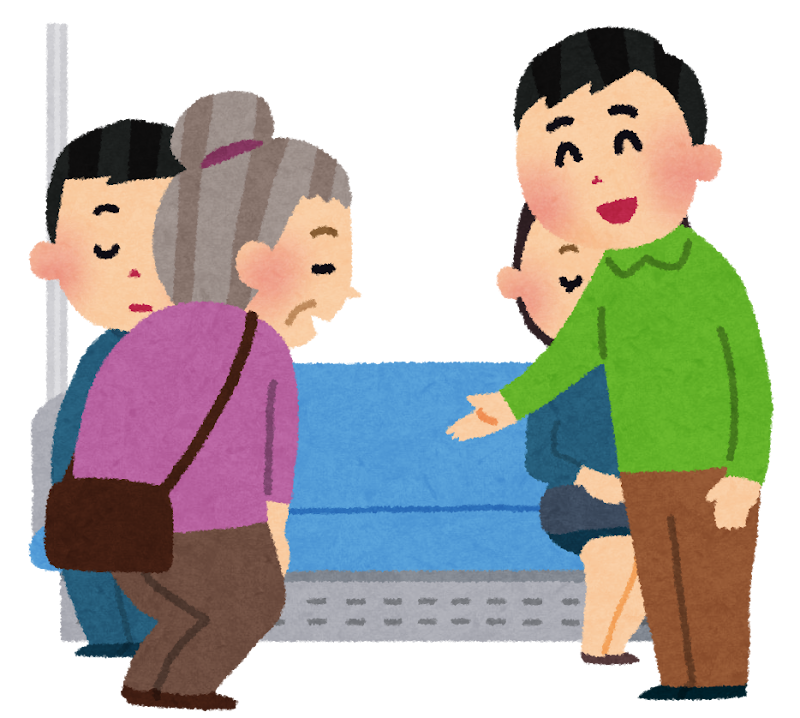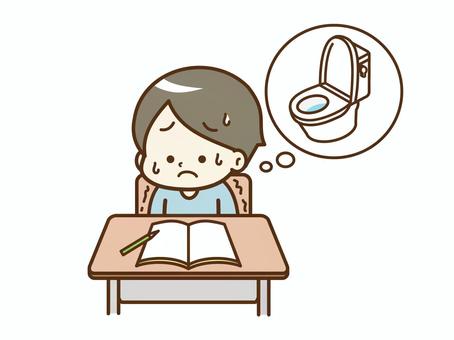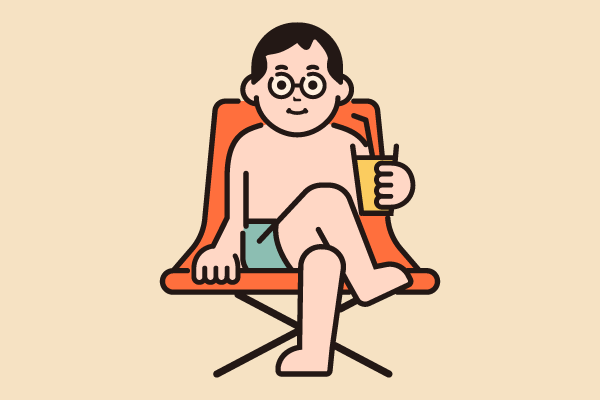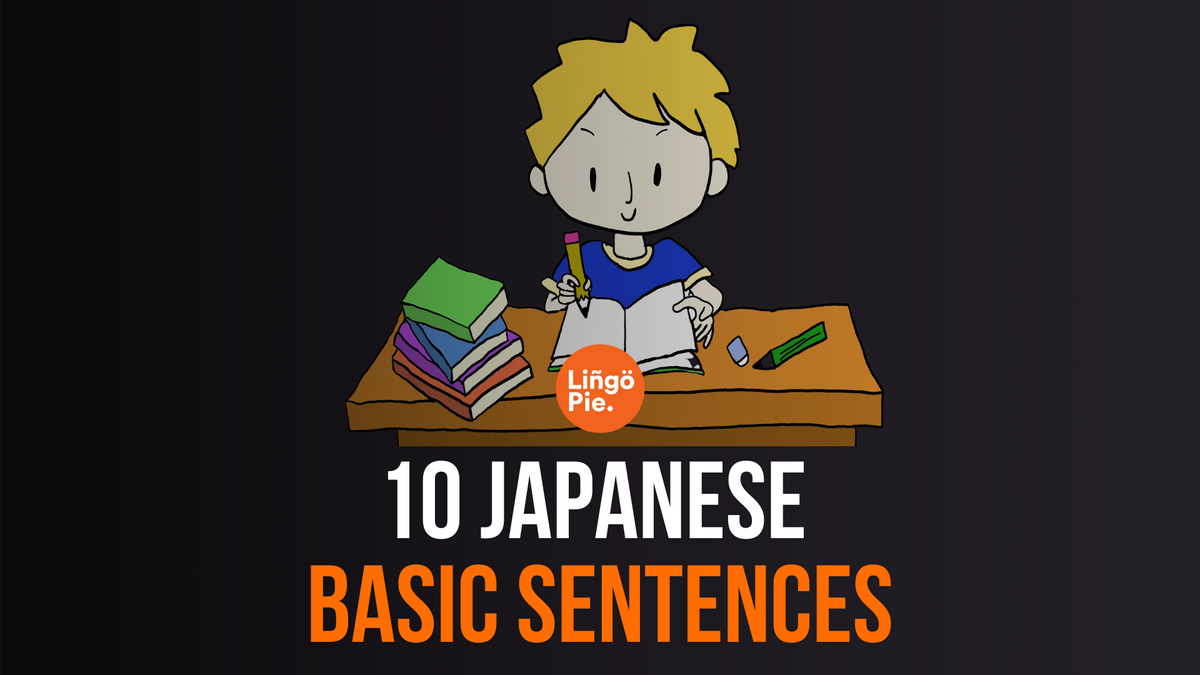Japanese words are much easier to remember when you slot them into clear sentence patterns. Instead of juggling isolated vocabulary and abstract grammar rules, you can learn structures that show up in almost every conversation. Mastering a handful of templates lets you quickly drop new words into place and speak confidently.
In this guide, you will learn ten basic Japanese sentence patterns that form the foundation of everyday speech, covering everything from self-introductions (also known as jikoshõkai - 自己紹介) to quick requests. Each pattern comes with a plain-language explanation, real examples, and a tip for practicing Japanese so you can plug these patterns into your study routine and see instant progress.
- 22+ Japanese Slang Words That Japanese People ACTUALLY USE
- 70+ Japanese Anime Phrases Every Fan Heard At Least Once
- 18 Untranslatable Japanese Words We Need In English

How Japanese Sentences Work
If you’re just starting out, it helps to know how Japanese sentence structure is different from English. The good news? It’s very consistent. Most basic sentences follow this pattern:
[Topic] + [What you’re saying about it]
In Japanese, the verb usually comes at the end of the sentence. This might feel backwards at first, but it becomes easier with practice.
Here’s what you need to know:
- Particles are small words that mark roles in a sentence (like “wa,” “ga,” “o,” and “ni”). You’ll see them a lot in the patterns below.
- “Desu” is often used at the end of a sentence to sound polite. It doesn’t translate directly but makes the sentence smoother and respectful.
- Japanese doesn’t always need a subject like “I” or “you.” If it’s obvious from context, it’s often left out.
- Word order matters. “Sakura wa sensei desu” means “Sakura is a teacher,” while “Sensei wa Sakura desu” means “The teacher is Sakura.”
Understanding these basics will help you plug Japanese words into the sentence patterns you’re about to learn.
What are the basic sentence patterns in Japanese?
1.AはBです (A wa B desu).
This is the most basic sentence pattern and the first to be learned by Japanese students. It can be used to express many things, from your name to your age or to describe things or people. A is a noun and B is a noun or an adjective. は is a particle or suffix that settles the main topic of the sentence, whereas です is an auxiliary that marks politeness and gives an affirmation about something.
Here are some examples with this structure:
私はアメリカ人です (Watashi wa Amerikajin desu, "I'm American")
田中さんは26歳です (Tanaka san wa 26 sai desu, "Mr./Mrs. Tanaka is 26 years old")
東京は有名です (Tōkyō wa yūmei desu, "Tokyo is famous")
お茶はおいしいです (Ocha wa oishii desu, "Tea is delicious")
私はエミリオです (Watashi wa Emirio desu, "I'm Emilio")

2.AはBじゃありません/じゃないです (A wa B ja arimasen/ja nai desu).
This structure is used to negate something. The last part of the sentence, じゃありません or じゃないです, expresses negation: A isn't B.
Examples:
私は日本人じゃありません (Watashi wa nihonjin ja arimasen, "I'm not Japanese")あれは車じゃないです (Are wa kuruma ja nai desu, "That isn't a car")東京は静かじゃないです (Tōkyō wa shizuka ja nai desu, "Tokyo isn't peaceful")今日は晴れじゃありません (Kyō wa hare ja arimasen, "Today isn't sunny")
Something important to know is that there is a limitation when it comes to adjectives, the I adjectives, like 大きい ōkii ("big") or 新しい atarashii ("new"), among others. The negation for these kind of adjectives is ~くないです instead. For instance:
この本は新しくないです (Kono hon wa atarashikunai desu, "This book isn't new")
この部屋は大きくないです (Kono heya wa ōkikunai desu, "This room isn't big").

3.AはBですか?(A wa B desu ka?).
This is similar to the previous pattern, but as a question. We only have to add the particle or suffix か at the end of the sentence to form a question. When pronouncing it, we have to make a question intonation at the end like we do in English.
Here are some examples:
これは本ですか? (Kore wa hon desu ka?, "Is this a book?")
あの方はジョンさんですか?(Ano kata wa Jon san desu ka?, "Is that person John?")
日本語は難しいですか?(Nihongo wa muzukashii desu ka?, "Is Japanese hard?")

4.~は[Question word]ですか? (~wa [Question word]desu ka?).
This is another sentence pattern used when making a question, but here we ask for an information that we don't know.
Examples:
あの方はどなたですか?(Ano kata wa donata desu ka?, "Who is that person?")
トイレはどこですか?(Toire wa doko desu ka?, "Where is the restroom?")
これは何ですか?(Kore wa nan desu ka?, "What is this?")
このカバンはいくらですか?(Kono kaban wa ikura desu ka?,"How much is this suitcase?")
テストはいつですか?(Tesuto wa itsu desu ka?, "When is the test?")
会議は何時ですか?(Kaigi wa nanji desu ka?, "At what time is the meeting?")
日本はどうですか?(Nihon wa dō desu ka?, "How is Japan?")
As you see, question words are words that are used to ask for an information we don't know. In English, this kind of words are "what", "who", "where", etc.

5.~が好きです(~wa suki desu).
If you want to say that you like something, then use this pattern.
日本料理が好きです (Nihon ryōri ga suki desu, "I like Japanese food")
スポーツが好きです (Supōtsu ga suki desu, "I like sports")

6.~てください (~te kudasai).
If you want to give an order or instruction to someone, use ~てください .
写真を見せてください (Shashin o misete kudasai, "Show me the photos, please")
電気をつけてください (Denki o tsukete kudasai, "Turn on the lights, please")
ドアを開けてください (Doa o akete kudasai, "Open the door, please")
Here, some verbs can change a lot in conjugation. That's the case for Group 1 verbs.
メールを書いてください (Mēru o kaite kudasai, "Write an e-mail, please")写真を撮ってください (Shashin o totte kudasai, "Take a picture, please")
入ってください (Haitte kudasai, "Come in, please")
You can add すみません sumimasen ("Excuse me") or どうぞ dozo ("Here you are") at the beginning of the sentence to ask for something or to offer something.
For instance:
すみません、ペンを貸してください (Sumimasen, pen o kashite kudasai, "Excuse me, lend me the pen please")
どうぞここに座ってください (Dōzo koko ni suwatte kudasai, "Here. Sit down, please")

7.~てもいいですか?(~temo ii desu ka?)
When asking for permission, use ~てもいいですか?.
ここにカバンを置いてもいいですか?(Koko ni kaban o oitemo ii desu ka?, "Can/may I put the suitcase here?")
タバコを吸ってもいいですか?(Tabako o suttemo ii desu ka?, "Can/may I smoke a cigarette?")
トイレに行ってもいいですか?(Toire ni ittemo ii desu ka?,"Can I go to the bathroom?")

8. ~が欲しいです/~たいです (~ga hoshii desu/~tai desu)
If you want to say that you want or wish something, use 欲しい hoshii ("to want") or ~たいです tai desu ("want to do"). The first one is used only with nouns, whereas ~たいです is used with verbs.
パソコンが欲しいです (Pasokon ga hoshii desu, "I want a PC")
休みが欲しいです (Yasumi ga hoshii desu, "I want vacations")
日本に行きたいです (Nihon ni ikitai desu, "I want to go to Japan")
お寿司を食べたいです (Osushi o tabetai desu, "I want to eat sushi")

9.~があります/います (~ga arimasu/imasu)
Use this pattern to tell people that you have something or someone. あります arimasu is used for objects, plants, places or things you can't touch. In other words, things that don't move.
車があります (Kuruma ga arimasu, "I have a car")
試験があります (Shiken ga arimasu, "I have a test")
花があります (Hana ga arimasu, "I have flowers")
バルコニーがあります (Barukonii ga arimasu, "I have a balcony")
On the other hand, います is used for people and animals. That is, things that move.
猫がいます (Neko ga imasu, "I have a cat")
弟がいます (Otōto ga imasu, "I have a young brother")
彼女がいます (Kanojo ga imasu, "I have a girlfriend")
Both ~があります/います can be used to say "there is" or "there are". The beginning of the sentence indicates the place where something or someone is placed. The place is accompanied with the particle に ni ("location") and the position can also be expressed (place + の no + position + に ni). For example:
部屋に本棚があります (Heya ni hondana ga arimasu, "There is a bookshelf in the room")
机の上に猫がいます (Tsukue no ue ni neko ga imasu, "There is a cat on the desk")

10. ~ができます (~ga dekimasu)
Finally, this sentence pattern is used to say that you're able to do something. Just add a noun before ~ができます and then you have it.
日本語ができます (Nihongo ga dekimasu, "I can speak Japanese")
歌ができます (Uta ga dekimasu, "I can sing")
車の運転ができます (Kuruma no unten ga dekimasu, "I can drive a car")
Note that this is the easy form. If you want to use verbs, use the infinitive or dictionary form (辞書形, jishokei) and then add こと koto before ~ができます:
- 泳ぐことができます (Oyogu koto ga dekimasu, "I can swim")
- 漢字を書くことができます (Kanji o kaku koto ga dekimasu, "I can write Kanji")
~ができます is also used to express that something is possible to do at a certain place.
- 公園で野球ができます (Kōen de yakyū ga dekimasu, "You can play baseball at the park")
ここでクレジットカードで払うことができます (Koko de kurejitto kādo de harau koto ga dekimasu, "You can pay with credit card here")

What about the plain form?
The 10 sentence patterns that we saw are in the polite form or Teineikei (丁寧形). When using the plain form or Futsukei (普通形) in an informal setting, we only have to change the last part of the sentences:
- AはBです(formal) ➡ AはBだ (A wa B da)
- AはBじゃありません/じゃないです➡ AはBじゃない (A wa B ja nai)
- AはBですか?➡ AはB?
- ~は[Question word]ですか?➡ ~は[Question word]?
- ~が好きです➡ ~が好き(だ)(~ga suki da)
- ~てください ➡ ~て
- ~てもいいですか?➡ ~てもいい?
- ~が欲しいです/~たいです➡ ~が欲しい/~たい
- ~があります/います➡ ~がある/いる
- ~ができます➡ ~ができる
Some examples with each pattern in plain form:
- 東京は有名だ (Tōkyō wa yūmei da, "Tokyo is famous")
- これは本じゃない (Kore wa hon ja nai, "This isn't a book")
- これは本? (Kore wa hon?, "Is this a book?")
- トイレはどこ? (Toire wa doko?, "Where is the bathroom?")
- お寿司が好きだ (Osushi ga suki da, "I like sushi")
- 写真を撮って (Shashin o totte, "Take a picture")
- トイレに行ってもいい? (Toire ni ittemo ii?, "Can I go to the bathroom?")
- 車が欲しい/日本に行きたい (Kuruma ga hoshii/Nihon ni ikitai, "I want a car"/"I want to go to Japan")
- パソコンがある/犬がいる (Pasokon ga aru/Inu ga iru, "I have a PC"/ "I have a dog")
- 日本語ができる/泳ぐことができる (Nihongo ga dekiru/Oyogu koto ga dekiru, "I can speak Japanese"/ "I can swim")
It's important to clarify that there's a limitation for structures 1 and 2 when it comes to i adjectives (大きい ōkii, 楽しい tanoshii, 新しい atarashii, etc.) since you don't use だ or じゃない for those adjectives. Here are some examples:
Pattern 1.
東京は大きい (Tōkyō wa ōkii, "Tokyo is big")
パーティーは楽しい (Pātii wa tanoshii, "The party is fun")
Pattern 2.
このパソコンは新しくない (Kono pasokon wa atarashikunai, "This PC isn't new")
私の部屋は小さくない (Watashi no heya wa chiisakunai, "My room isn't small")
Learn the Japanese sentence patterns with Lingopie
There you have them. 10 basic sentence patterns that will help you with your Japanese learning. Now, you can make many basic sentences with these structures. However, there are more patterns out there to learn, and a way to accomplish that is by learning with Lingopie, which offers real and great Japanese TV to learn the language. Imagine learning new sentence patterns while watching your favorite Anime!
In addition to TV shows, there are group or 1-on-1 private lessons with professional teachers and tutors focused on the shows and a certain topic, like ordering at a restaurant, for example.
So, what are you waiting for? Sign up and start your free trial now with Lingopie!
Frequently Asked Questions About Japanese Grammar
What is basic Japanese grammar?
Basic Japanese grammar includes sentence patterns, particles, and verb endings used to form simple statements, questions, and commands. It focuses on structures like “A wa B desu” and “A wa B ja arimasen” to express identity, likes, and actions. Mastering these gives you the foundation to build more complex sentences over time.
Is Japanese grammar difficult?
Japanese grammar can feel challenging at first because it’s structured differently from English, especially with verbs at the end and the use of particles. However, once you learn the core patterns, it becomes surprisingly logical and consistent. Beginners often find it easier than expected once they get used to the sentence order.
What is the structure of Japanese grammar?
Most Japanese sentences follow a subject–object–verb order, with particles marking the role of each word. For example, “Watashi wa sushi o tabemasu” means “I eat sushi.” The verb always comes at the end, and context often determines what’s left unsaid.
Is 3 years enough to learn Japanese?
Three years is enough time to reach a solid conversational level if you study consistently. You can expect to master basic sentence patterns, everyday vocabulary, and understand simple native content like anime or TV shows. Fluency takes longer, but three years gives you a strong foundation.









